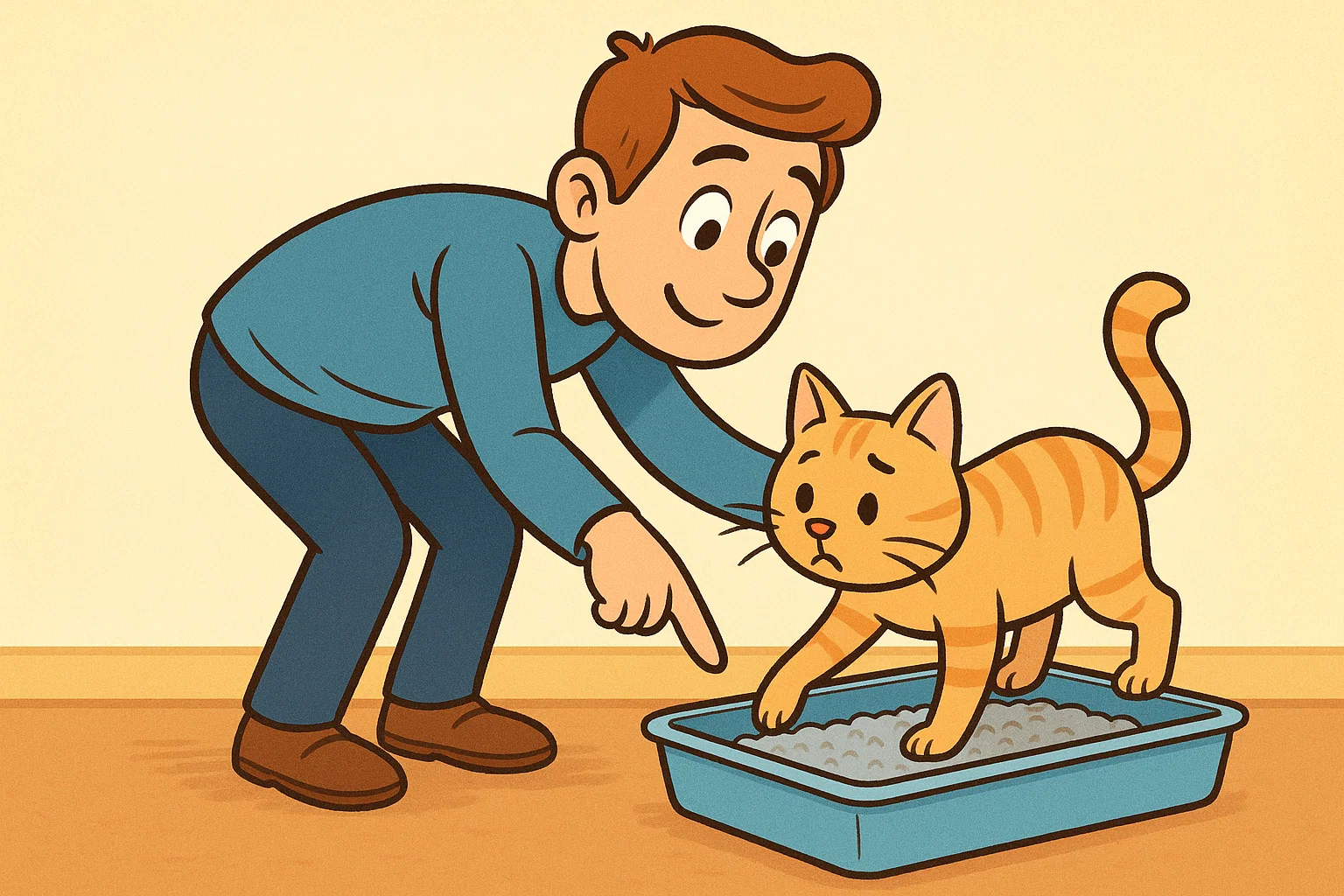Welcoming a cat into your home is a joyful experience—until you discover that your new feline friend is not using the litter tray. Whether you’ve brought home a curious kitten, adopted a shelter cat, or moved to a new house, litter box issues can be frustrating. The good news? With a little patience, the right setup, and some understanding of feline behaviour, you can teach your cat to use the litter tray consistently.
Here’s how to do it step by step.
1. Choose the right litter tray
Let’s start with the basics: the box itself. Not all litter trays are created equal, and cats can be particular (read: picky). When choosing a tray, consider:
- Size: It should be large enough for your cat to comfortably turn around and dig.
- Sides: Lower sides are best for kittens or senior cats with mobility issues. High-sided boxes help with litter scatter.
- Covered vs. Uncovered: Some cats prefer privacy (covered trays), while others feel trapped and prefer open ones. Start with uncovered unless you know your cat’s preference.
- Pro tip: Have one litter tray per cat, plus one extra. Even if you only have one cat, two trays in different spots offer options and reduce accidents.
2. Pick the right litter
There are dozens of types of cat litter—clumping, non-clumping, scented, unscented, clay, paper, crystal… the list goes on. Cats often prefer:
- Unscented clumping litter: It mimics the texture of sand or dirt, which is instinctively appealing to cats.
- Soft texture: Some cats dislike coarse pellets or sharp crystals.
If you’re not sure, try offering two trays with different litter types and see which one your cat chooses. Let them decide.
3. Placement is everything
Where you put the litter tray can make or break the situation. Cats want privacy, quiet, and a sense of security when they do their business.
- Avoid high-traffic areas, loud appliances (like washing machines), or places where dogs or children might disturb them.
- Never place the litter tray near their food or water bowls. cats are very clean animals and don’t like mixing bathroom and mealtime.
- Keep trays accessible. Don’t tuck them away in a basement unless the cat can get there easily and safely.
4. Introduce the tray properly
When you bring your cat home, or into a new environment, show them the tray. Gently place them in it a few times throughout the day, especially after meals, play, or naps.
For kittens:
- Place them in the tray after waking or eating.
- If they start sniffing, crouching, or scratching outside the tray, gently move them in.
For adult cats:
- They often already know what to do. But if they’re unsure or stressed, provide reassurance and consistency.
Avoid scolding for accidents—cats respond better to positive reinforcement and a calm environment.
5. Keep it clean
Would you want to use a dirty bathroom? Neither does your cat.
- Scoop at least once a day.
- Change the litter entirely and wash the tray weekly (or more if needed).
- Use mild, unscented soap. Strong-smelling cleaners can deter your cat.
A clean tray encourages regular use—and avoids unpleasant odours in your home.
6. Address accidents calmly
If your cat pees outside the litter box, don’t panic. Here’s what to do:
- Clean the area thoroughly with an enzymatic cleaner to remove the smell. If they can smell their scent, they might return to the spot.
- Check for a pattern: Are they going in the same place? Is it near a tray or far away?
- Rule out stressors: Have you moved furniture? Brought home a new pet? Loud noises?
Accidents are often a sign that something needs adjusting—not a reason for punishment.
7. Watch for medical issues
If your cat suddenly stops using the litter tray, visit the vet. It could be a sign of:
- Urinary tract infections (UTIs)
- Kidney issues
- Arthritis (making it hard to get in/out of the tray)
- Stress-related inflammation
These issues can be painful and are often mistaken for “bad behaviour.”
8. Positive reinforcement works wonders
Whenever your cat uses the litter tray correctly, offer calm praise or even a small treat. While cats aren’t as food-motivated as dogs, they can associate good behaviour with good outcomes. Don’t interrupt them while they’re using the tray—give them space, then reward afterwards if you’d like.
9. Consider special cases
- Rescue Cats: They may have never used a litter box before. Give them time, a consistent routine, and lots of encouragement.
- Outdoor Cats Adjusting to Indoor Life: Use soil-based or sandy litter to make the transition easier.
- Multi-Cat Households: Some cats don’t like sharing. Give each cat their own space and tray.
10. Stay consistent
Consistency is key. Once your cat gets used to a location, a type of litter, or a schedule—stick to it. Sudden changes can cause confusion and lead to accidents. If you must change something, do it gradually. For example, mix the new litter with the old over several days.
Final thoughts
Getting your cat to reliably use the litter tray isn’t about training them like a dog—it’s about understanding their instincts and preferences. Cats are clean, private, and particular creatures. If their environment respects those traits, they’ll usually take to the litter tray without much fuss.
Remember: patience, observation, and a little empathy go a long way. Set them up for success, and your cat will reward you with good habits—and fewer unpleasant surprises.
